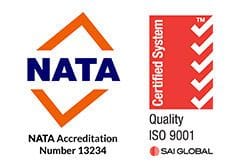1800 429 266
HomeAbout UsServices
Asbestos Services
CareersBlogContact UsAsbestos Audits (Division 5)Division 6 Asbestos AuditAsbestos Identification/SamplingVisual ClearanceAir MonitoringSMF MonitoringAsbestos Training Courses
TrainingTraining ScheduleTailored Training Solutions
Occupational HygieneBehavioural Safety for ManagementConfined Space Entry for SupervisorsEnvironmental Management TrainingFacility Management TrainingHazard & Operability - HAZOP StudyHAZCON Study - Incorporating HSE into the Design of Commercial BuildingsIntroduction to the Legal Aspects of Occupational Health & Safety (2hours)Managing & Planning Asbestos Removal ProjectsOHS HSR ForumOHS Regulations 2017 - Your Role as a SupervisorPermit to Work (PTW) TrainingPrevention of falls from HeightsRisk Management & Plant SafetySafe Work in Confined SpacesStress ManagementUnderstanding the construction industryUnderstanding the OHS Regulations 2017
LeadershipOHS Training for Managers & SupervisorsHealth Safety Representative TrainingWork Health & Safety Training QueenslandAsbestos Training CoursesCPCCDE3015 Remove friable asbestosCPCCDE3014 Remove non friable asbestosCPCCDE4008 Supervise asbestos removalAsbestos AwarenessClass A Asbestos Removalist Refresher TrainingClass B Asbestos Removalist Refresher Training
Heights TrainingConfined Space TrainingDangerous Goods and Hazardous ChemicalsTLID0021 Store and handle dangerous goods and hazardous substancesHazardous Substances & Dangerous Goods in the Workplace
Silica Dust AwarenessHSE TrainingEmergency WardenExcavation and Trenching AwarenessHazardous Manual HandlingHazardous Substances & Dangerous GoodsHealth and Safety in the OfficeNoise and Hearing ConservationPractical Risk Assessment & Job Safety Analysis (JSA)Preventing & Responding to Workplace BullyingPreventing & Responding to Work Related Violence
Innovative Occupational Hygiene Training for Developing Safety ProfessionalsW201 Fundamentals of Occupational HygieneW501 Measurement of Hazardous SubstancesW502 Thermal EnvironmentW503 Noise - Measurements and EffectsW504 Asbestos and Other FibresW505 Control of Hazardous SubstancesW506 Ergonomics EssentialsW507 Health Effects of Hazardous Substances
Student, Venue and Training Booking InformationVerification of CompetencyDust & Silica Monitoring & ServicesNoise Monitoring & ServicesOccupational Hygiene Monitoring (Chemical)Air Quality (IAQ)Bio aerosol Sampling (Mould, Bacteria & Fungi)Clandestine Laboratories Clearance & Clean Up
HSE ManagementOHS Management SystemsHSE AuditingHigh Risk Focused AuditsDue DiligenceCooling Tower AuditsContractor ManagementRisk RegistersManual Handling and ErgonomicsHazardous Substances and Dangerous Goods (chemical safety consulting)HSE Specific Hazard ProgramsAccident/Incident Investigation and RecoverySafety ServicesEmergency Management
Environment

 Many organisations are faced with reports of adverse health effects as a result of the quality of the indoor working environment. Indoor air quality complaints are most common during the spring and autumn periods and can range from dry eyes to respiratory problems.
Many organisations are faced with reports of adverse health effects as a result of the quality of the indoor working environment. Indoor air quality complaints are most common during the spring and autumn periods and can range from dry eyes to respiratory problems.



